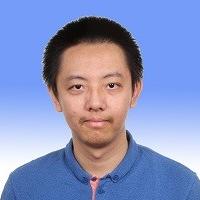- Speaker
- A/Prof. Jie Xu
- Academy of Mathematics and Systems Science (AMSS), CAS
- Abstract
Non-axisymmetric rigid molecules have proved to exhibit rich liquid-crystalline phases that are barely understood theoretically, especially for the connection between the molecular architecture and macroscopic phase behaviors. A promising route is to derive macroscopic theory from molecular theory, which has shown its success in the study of rod-like and bent-core molecules.
We first report a tensor model for nematic phases of bent-core molecules constructed from molecular theory. The form of free energy is determined by molecular symmetry, which includes the couplings and derivatives of a vector and two second-order tensors, with the coefficients determined by molecular parameters. We use the model to study the nematic phases resulting from the hard-core potential. Unlike most macroscopic models, we are able to obtain the phase diagram about the molecular parameters, but not merely some phenomenological coefficients. The tensor model is applicable to other molecules with the same symmetry, which we demonstrate by studying the phase diagram of star molecules. We incorporate the free energy into hydrodynamics and construct dynamic model. Similar to the static model, the form and coefficients are determined by molecular symmetry and molecular parameters, respectively.
We then discuss several essential ingredients in this route to construct free energy for general rigid molecules: molecular symmetry; order parameters to describe mesoscopic states; expansion of interaction kernels; entropy. The molecular symmetry is characterized by a point group. We follow three steps below to arrive at the macroscopic free energy.
1) From the proper rotations in the point group, we identify, with explicit expressions, the invariant tensors, which are nonvanishing when averaged by the density function. It is from the averages of these invariant tensors that the order parameters are chosen.
2) By expanding the interaction kernels into coupling of tensors, the interaction free energy can be constructed. The improper rotations, although having no effect on order parameters, impose extra conditions on the expansion of interaction kernels.
3) The entropy term can be converted into a function of tensor order parameters by finding the maximum entropy state. We further propose a simple function as an approximation that maintains the essential properties of the original entropy, while avoiding the integrals in the original entropy.
- About the Speaker
徐劼博士于2010年和2015年在北京大学分别获学士和博士学位,师从张平文院士;后在普渡大学与沈捷教授合作从事博士后研究;2019年加入中科院计算数学与科学工程计算研究所。徐劼博士在液晶数学建模与模拟、梯度流的数值格式方面取得了突出成果,特别是对复杂形状液晶分子发展了一套行之有效的系统建模方法,对梯度流系统提出了简单高效的标量辅助变量(SAV)格式。到目前为止,在SIAM Review等国际一流杂志发表论文近20篇。
- Date&Time
- 2021-04-23 10:30 AM
- Location
- Room: A203 Meeting Room




